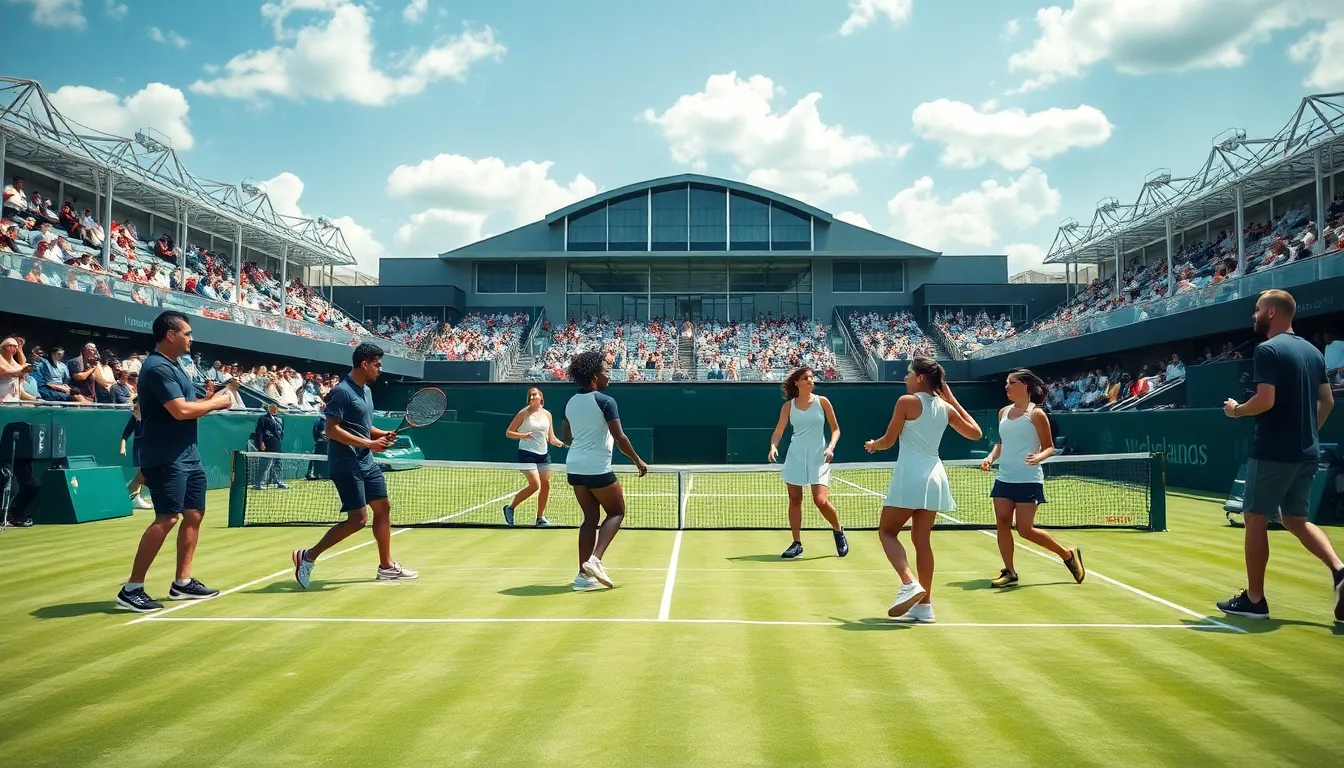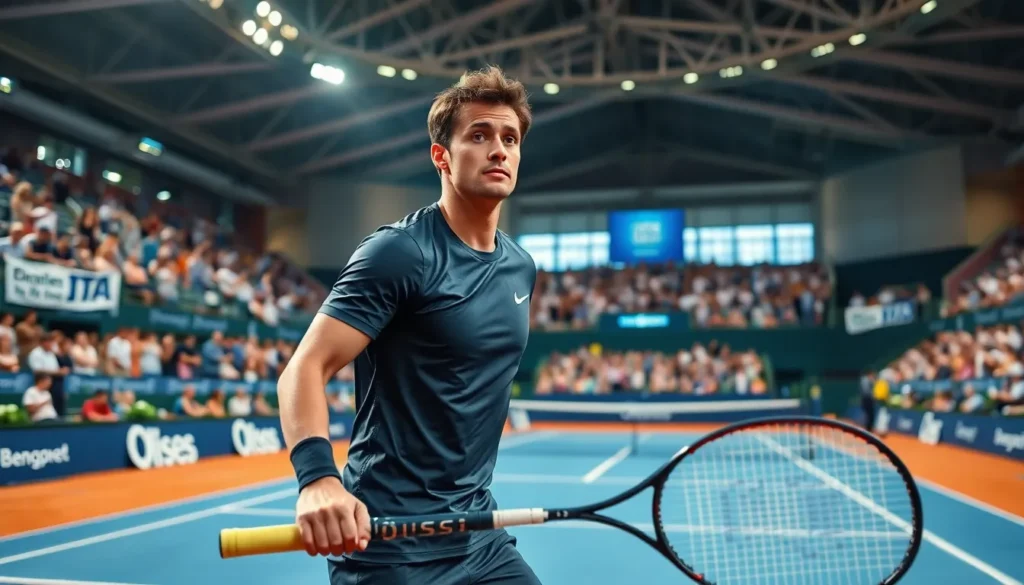Table of Contents
ToggleWhen you think of elegance, strategy, and a sprinkle of drama, tennis whirls into the spotlight like a champion serving an ace. It’s the sport that pulls at heartstrings, inspires roaring crowds, and, let’s be honest, occasionally has viewers yelling at their screens as if Novak Djokovic can hear them. Whether you’re a wannabe tennis star or an occasional viewer, the game is woven into the fabric of sports culture. This article dives into the rich ancestry of tennis, its thrilling tournaments, and what makes it tick, so grab your racket and let’s serve up some knowledge.
The Origins and Evolution of Tennis

Tennis has a storied past that dates back centuries. The game is believed to have originated in France in the late 12th century. Back then, players used their hands to strike a ball, which certainly adds a new dimension to the phrase ‘not your typical tennis match’. In the 16th century, rackets were introduced, and the game saw itself evolve into the version we know today.
Fast forward to the late 1800s, tennis underwent another transformation, finding its way to England, where the All England Lawn Tennis and Croquet Club held the first Wimbledon championship in 1877. Only a few decades later, numerous countries began to showcase their talents, leading to the establishment of major worldwide tournaments that bear great significance even today.
The Birth of Modern Tennis
This evolution didn’t just stop at rackets. The rules, equipment, and even court surfaces all experienced changes. Grass gave way to clay and hard courts, introducing different challenges for players worldwide. The sport continues to mature, with new technologies contributing to how athletes perform and compete.
Tennis is now an international phenomenon, enjoyed in parks, clubs, and stadiums globally, showing that the love for this game runs deep.
Major Tennis Tournaments and Their Importance
Tennis showcases its best during major tournaments, often called the Grand Slam events: the Australian Open, French Open, Wimbledon, and US Open. These aren’t just matches: they are dramatic narratives filled with triumph, heartbreak, and the quest for glory.
The Australian Open serves as the season opener, taking place typically in January and offering players a chance to start the year on a high note. Next up is the French Open, held on the iconic clay courts of Roland Garros. The unique surface offers its own challenges, proving that champions must adapt to any situation.
Then comes Wimbledon, a grand staple in tennis tradition with its lush grass courts and royal patronage. This prestigious tournament demands not just skill but an understanding of how to thrive on grass, where the ball behaves differently than on other surfaces. Last but certainly not least is the US Open, a high-energy event marking the end of the Grand Slam season, held under the glow of New York’s vibrant lights.
These tournaments play a pivotal role in developing the sport’s image and bring in substantial revenue, fanfare, and international attention. They shape player careers and often define legacies.
Understanding Tennis Scoring and Rules
Tennis scoring can seem a bit puzzling at first glance. Matches are typically played as best of three or five sets. A player needs to win six games to win a set, but they must be ahead by at least two games.
Scoring progresses like this: Points in a game are tallied as 15, 30, 40, and then game point. Yes, you heard that right, who came up with 15 instead of just starting at one? We might never know, but it adds a quirky charm to the scoring system.
Also, if a tie, players may face tiebreakers, where every point counts even more dramatically. These nuances can shift the tide in any match, making it all the more essential for players to master the rules as well as the game.
Top Tennis Players of All Time
In the world of tennis, certain names always rise to the top when discussing legends. Players like Roger Federer, Serena Williams, and Rafael Nadal have etched their names in history with remarkable achievements.
Federer, with his fluid playing style and unmatched grace on the court, has won a staggering 20 Grand Slam titles. His rival, Nadal, known for his tenacity, especially on clay, has made the French Open his own personal playground. Meanwhile, Serena Williams has redefined the game for women with her powerful serve and exceptional athleticism.
The Role of Technology in Modern Tennis
Today, technology amplifies the sport through innovations like Hawk-Eye, which accurately tracks ball trajectories during matches. This not only enhances the viewing experience but also supports players in their decision-making during tight matches. Gone are the days when a line call could swing the game: now players can challenge those calls if need be.
Training and Conditioning for Aspiring Tennis Players
Aspiring tennis players need to prioritize training and conditioning. Just hitting the courts isn’t enough. It requires a blend of physical fitness, mental sharpness, and consistent practice. This means speed drills, agility training, endurance exercises, and practicing those tricky backhands.
Also, mental conditioning has gained emphasis in today’s game. Tennis is as much a mental sport as it is physical. Players often train to build resilience, maintain focus, and perform under pressure. Many will incorporate mindfulness and visualization techniques into their regimes to keep their heads in the game. It’s often said that the mind can push your body beyond its limits.
The Future of Tennis: Trends and Predictions
Looking ahead, tennis will continue to evolve, embracing technology and globalization. With a growing number of tournaments worldwide and increased opportunities for young talent, the landscape is shifting. More young athletes are joining the ranks, showcasing diverse backgrounds and styles.
Also, the rise of social media and streaming platforms will change how fans engage with the sport. Accessible content will bring in new audiences, and with them, fresh excitement. Players might find themselves not just athletes, but brands and influencers shaping the tennis culture beyond mere competition.
Sustainability will also become more central. As players and organizations recognize their environmental impacts, they will advocate for greener practices within the sport. This could mean eco-friendly materials for equipment and sustainable tournament practices, highlighting how tennis can lead the charge in sportsmanship and environmental responsibility.








